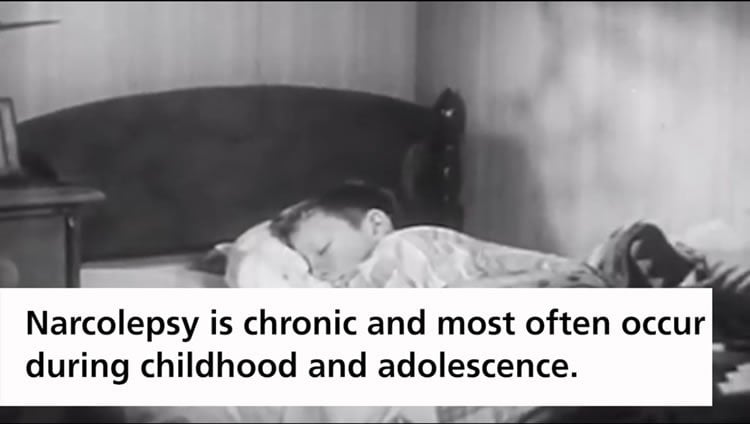Summary: Autoreactive cytotoxic CD8 T cells have been detected in people with narcolepsy type one. The finding suggests levels of the T-cell reactivity, combined with specific gene expression, may spur on the development of NT1.
Source: University of Copenhagen
Researchers from the University of Copenhagen have discovered autoreactive cells in persons suffering from narcolepsy. This is a new, important proof that the sleep disorder is an autoimmune disease. This knowledge may lead to better treatment of the chronic condition, the researchers behind the new discovery believe.
For many years, scientists have expected the sleep disorder narcolepsy of being an autoimmune disease, though without being able to prove it conclusively. Now researchers from the Faculty of Health and Medical Sciences at the University of Copenhagen together with the Technical University of Denmark and Rigshospitalet have found a new, important proof that their presumptions were correct. The new research results have been published in the scientific journal Nature Communications.
‘We have found autoreactive cytotoxic CD8 T cells in the blood of narcolepsy patients. That is, the cells recognize the neurons that produce hypocretin which regulates a person’s waking state. It does not prove that they are the ones that killed the neurons, but it is an important step forward. Now we know what the cells are after,’ says Associate Professor Birgitte Rahbek Kornum from the Department of Neuroscience.
The immune system is designed to recognize viruses and bacteria. When its cells are autoreactive – which is the case in autoimmune diseases – the immune system recognizes the body’s own cells and attacks them. That they are cytotoxic means that they are capable of killing other cells. In most narcolepsy patients, the neurons that produce hypocretin and thus regulate our waking state have been destroyed.

‘To kill other cells, e.g. neurons producing hypocretin, CD4 and CD8 T cells usually have to work together. In 2018, scientists discovered autoreactive CD4 T cells in narcolepsy patients. This was really the first proof that narcolepsy is, in fact, an autoimmune disease. Now we have provided more, important proof: that CD8 T cells are autoreactive too,’ says Birgitte Rahbek Kornum.
Autoreactive Cells Were Also Found in Healthy Individuals
In the study, the researchers studied and analyzed blood samples from 20 persons with narcolepsy. In addition, they analyzed blood samples from a control group of 52 healthy persons. In nearly all 20 narcolepsy patients the researchers found autoreactive CD8 T cells. But autoreactivity was not only found in persons suffering from the sleep disorder. The researchers also discovered autoreactive cells in a lot of the healthy individuals.
‘We also found autoreactive cells in some of the healthy individuals, but here the cells probably have not been activated. It is something we see more and more often with autoimmunity – that it lies dormant in all of us, but is not activated in everyone. The next big puzzle is learning what activates them’, says Birgitte Rahbek Kornum
Video credit: University of Copenhagen.
According to Birgitte Rahbek Kornum, the discovery of autoreactive cells in healthy individuals also stresses the theory that something has to trigger narcolepsy and activate autoreactivity. Scientists still do not know what causes the disease. They expect a combination of genetics, autoreactive cells and a form of trigger to bring about the disease, e.g. a virus infection. The disease can be treated medically today, but the new research results may pave the way for even better treatments.
‘Now there will probably be more focus on trying to treat narcolepsy with drugs allaying the immune system. This has already been attempted, though, because the hypothesis that it is an autoimmune disease has existed for many years. But now that we know that it is T cell-driven, we can begin to target and make immune treatments even more effective and precise,’ says Birgitte Rahbek Kornum.
Note:
* There are two types of narcolepsy. People suffering from type 1, which is the most common form, lack the transmitter substance hypocretin which regulates the waking state, and they suffer from cataplexy which is brief loss of muscle control.
* Persons with type 2 do not lack hypocretin and do not suffer from cataplexy. Still, they experience the same symptoms as type 1 patients. In this study, the researchers focussed on type 1.
Funding: Lundbeck Foundation fellowship and postdoc scholarship, Independent Research Fund Denmark, Norwegian Ministry of Health and Care Services funded this study.
Source:
University of Copenhagen
Media Contacts:
Cecilie Krabbe – University of Copenhagen
Image Source:
The image is adapted from the University of Copenhagen video.
Original Research: Open access
Natasja Wulff Pedersen, Anja Holm, Nikolaj Pagh Kristensen, Anne-Mette Bjerregaard, Amalie Kai Bentzen, Andrea Marion Marquard, Tripti Tamhane, Kristoffer Sølvsten Burgdorf, Henrik Ullum, Poul Jennum, Stine Knudsen, Sine Reker Hadrup & Birgitte Rahbek Kornum “CD8+ T cells from patients with narcolepsy and healthy controls recognize hypocretin neuron-specific antigens”. Nature Communications, volume 10, Article number: 837 (2019) doi:10.1038/s41467-019-08774-1
Abstract
CD8+ T cells from patients with narcolepsy and healthy controls recognize hypocretin neuron-specific antigens
Narcolepsy Type 1 (NT1) is a neurological sleep disorder, characterized by the loss of hypocretin/orexin signaling in the brain. Genetic, epidemiological and experimental data support the hypothesis that NT1 is a T-cell-mediated autoimmune disease targeting the hypocretin producing neurons. While autoreactive CD4+ T cells have been detected in patients, CD8+ T cells have only been examined to a minor extent. Here we detect CD8+ T cells specific toward narcolepsy-relevant peptides presented primarily by NT1-associated HLA types in the blood of 20 patients with NT1 as well as in 52 healthy controls, using peptide-MHC-I multimers labeled with DNA barcodes. In healthy controls carrying the disease-predisposing HLA-DQB1*06:02 allele, the frequency of autoreactive CD8+ T cells was lower as compared with both NT1 patients and HLA-DQB1*06:02-negative healthy individuals. These findings suggest that a certain level of CD8+ T-cell reactivity combined with HLA-DQB1*06:02 expression is important for NT1 development.






